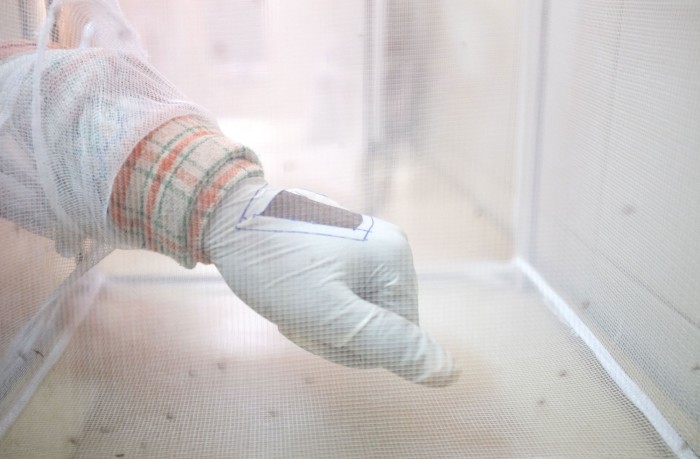In Africa, Scientists Are Preparing to Use Gene Drives to End Malaria

In Burkina Faso, Mali, and Uganda, the groundwork is being laid for a powerful kind of experiment. A project now under way aims to release mosquitoes that have been genetically programmed to drive themselves and their malaria-causing brethren toward extinction.
As we wrote last year, the program, called Target Malaria, is meant to use a gene drive to drastically reduce the number of mosquitoes that transmit the disease in sub-Saharan Africa, where it kills hundreds of thousands of people a year. Not long ago this was merely theoretical, but modified mosquitoes with gene drives on board are already being bred and tested in labs.
The idea is that a so-called selfish gene with effects that would ultimately doom the population is introduced and then replicates itself at a far higher rate than normal, spreading rapidly. Target Malaria, which is funded by the Bill and Melinda Gates Foundation, is exploring several ways to use this technology. One of the most promising involves altering mosquitoes in such a way that new generations are almost exclusively male. Male mosquitoes don’t bite people, and a population with hardly any females would be unable to reproduce.
There is still a long way to go before gene drive insects are released into the wild, but plans are moving ahead. Apart from further developing the technology, one of the biggest challenges at this stage is making sure people living in the region understand the nature of the work and what’s at stake. As Stat reports, many people in Burkina Faso believe that malaria can be caused by a bad diet rather than mosquito bites. Researchers are canvassing communities as part of a push to educate locals on how the disease works and what Target Malaria entails.
Little is known about the ecological consequences as well. In sub-Saharan Africa, most malaria is transmitted through three types of Anopheles mosquitoes. Target Malaria is focusing on Anopheles gambiae, with the goal of severely reducing or eradicating this type. Out of around 3,500 known species of mosquitoes, eliminating one may not seem like a big deal. But it’s never been done before. And no one knows if a gene drive, once released into the wild, could jump into other species.
What is known is that malaria is a persistent, deadly disease that damages quality of life for millions of people around the world. Gene drives have been proposed as a way to solve many ecological ills, from the decline of rare Hawaiian birds to the excess of invasive mammals in New Zealand. With many questions remaining about how gene drives might work in nature, scientists are understandably cautious about deploying them. But malaria is one of the greatest public health threats on the planet. If we have the power to end it, the real question must be: Why shouldn’t we use it?
(Read more: Stat, “The Extinction Invention,” “With This Genetic Engineering Technology, There’s No Turning Back,” “First Gene Drive in Mammals Could Aid Vast New Zealand Eradication Plan”)
Keep Reading
Most Popular
Large language models can do jaw-dropping things. But nobody knows exactly why.
And that's a problem. Figuring it out is one of the biggest scientific puzzles of our time and a crucial step towards controlling more powerful future models.
The problem with plug-in hybrids? Their drivers.
Plug-in hybrids are often sold as a transition to EVs, but new data from Europe shows we’re still underestimating the emissions they produce.
How scientists traced a mysterious covid case back to six toilets
When wastewater surveillance turns into a hunt for a single infected individual, the ethics get tricky.
Google DeepMind’s new generative model makes Super Mario–like games from scratch
Genie learns how to control games by watching hours and hours of video. It could help train next-gen robots too.
Stay connected
Get the latest updates from
MIT Technology Review
Discover special offers, top stories, upcoming events, and more.